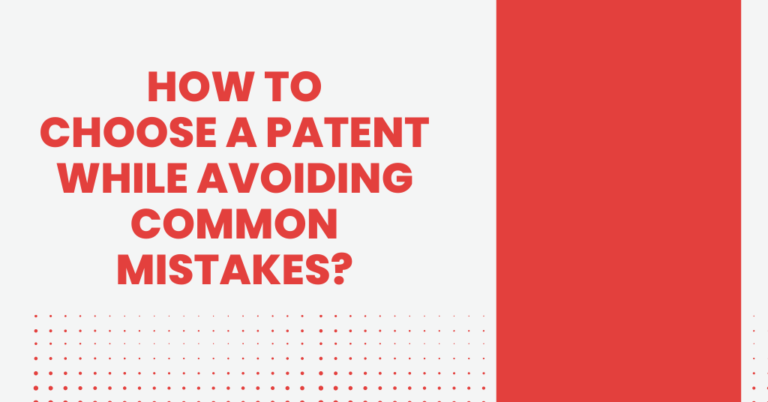Filing for a patent is widely regarded as India’s most challenging form of intellectual property registration due to the complexity of the process. The process of applying for a patent necessitates substantial research, prior searches, claims, and a number of additional requirements. One of these endless processes on step is to determine the type of patent that your invention seeking patent belongs to. It is indisputable that in India, a patent will only be issued for an invention if it satisfies all three criteria for patentability, namely novelty, inventive step, and industrial application.
If you have an invention that is capable of passing all three of the tests for patentability, the next step is to choose the type of patent that you want to use for your invention. Utility, product, process, design, plant, and provisional patent applications are the categories of Patents that can be protected in India. Each category has its own set of requirements to qualify, and it protects a separate category of ideas, innovations, or discoveries.
Table of Contents
ToggleDifferent Patents
Utility Patent/ Patents
Patents granted in India and utility patents provide essentially the same form of protection, although they are described using different terminology. In India, “patent” is used as opposed to “utility patent.” In order to obtain a patent in India, one must adhere to the stringent requirements enumerated in the country’s patent laws. The invention must be novel, inventive, have industrial application, and not fall under the Indian Patents Act’s list of non-patentable subject matter. Patents and utility patents are granted in India for new inventions that satisfy legal requirements. The patent holder enjoys exclusive rights for twenty years, including the ability to prevent others from selling, using, manufacturing, offering for sale, or importing the patented invention.
Product Patent
A product patent, as the name suggests is granted for the end product. It provides increased protection for the inventor’s creation by reducing the amount of competition from other companies producing the same products. On the other hand, a process patent safeguards just the steps involved in the production of a good and not the good itself. The product patent increases the level of monopoly while decreasing the amount of competition in the market.
Process Patent
Protection under a process patent is only given to a particular procedure that is employed in the manufacturing of a product and not to the product itself. Many people believe that a process patent offers just a limited level of protection. The reason for this is that it does not restrict or hinder others from producing or generating the same product by making use of a different procedure. As a consequence of this, it is feasible for a single product to be the subject of many method patents that have been awarded. This will, in the long run, make the inventor’s monopoly less effective, which will result in an increase in the number of competitors.
Provisional Patent
When an invention is still in the process of being developed, a provisional patent application might be filed for it. A provisional patent is essentially an application that does not require the disclosure of the details of the invention, but it is utilised as a tool to protect your concept for a period of one year. If the final patent application is not submitted within one year of the provisional patent application being filed, the provisional patent application will cease to exist if this requirement is not met.
As was indicated earlier, a provisional application is distinct from a conventional patent application in that it does not require formal drawings or extensive explanations of the invention. Instead, all that is required is an abstract and some fundamental information about how your idea functions. Because of this, it is simpler to file early even if one does not have all of the facts nailed down.
Design Patents
According to the Designs Act of 2000, the term “Design” refers to characteristics of an object’s shape, pattern, configuration, ornament, or composition of colours or lines that are applied in three dimensional or two dimensional or in both forms using any of the processes, whether manual, chemical, mechanical, separate, or combined, and which, in the finished article, appeal to or are judged wholly by the eye.
Design patents are a type of patent that can be obtained in several countries, including the United States, China, and the European Union. Design patents are granted for novel and creative designs. However, in India, a “Design” is not considered to be a type of patent, and the “Designs Act, 2000” is the piece of legislation that governs the process of filing for and registering a “Design.”
Additionally, filing for a design is much cheaper than filing for a patent of any kind.
Plant Patents
Under section 3(j) of the Patent Act of 1970, plant and animal patents are not deemed inventions and are therefore not eligible for patent protection. Asexually produced or found in their natural, uncultivated state, plants cannot be patented either. While it is not possible to patent a plant itself in India, a patent holder may still claim patent rights to a genetically modified plant by patenting the method by which the plant was modified. This way is also considered as a loophole in the said clause of the Patents Act,1970.
How to choose?
Before proceeding with the patent application, it is essential to thoroughly comprehend your invention. One must evaluate the type of their invention, whether it is a machine, process, product, plant, or design. If the invention is a design, it will not be eligible for patent protection in India but will be governed by the Industrial Design law. In addition, if your invention has not yet been completed, it will fall under the provisional patent, and so forth.
What mistakes to avoid?
The next stage is to determine whether your inventions pass all three patentability tests. Even if the requirements for novelty are met, a bogus invention with no practical applicability is equivalent to nothing. Therefore, an invention must satisfy all three criteria for patentability; meeting only one or two will not suffice.
Lastly, initiating the filing process for a patent is always time- and resource-intensive, but seeking professional assistance from patent attorneys is always a good idea, and filing a patent will become a breeze for those who are struggling to do so.






